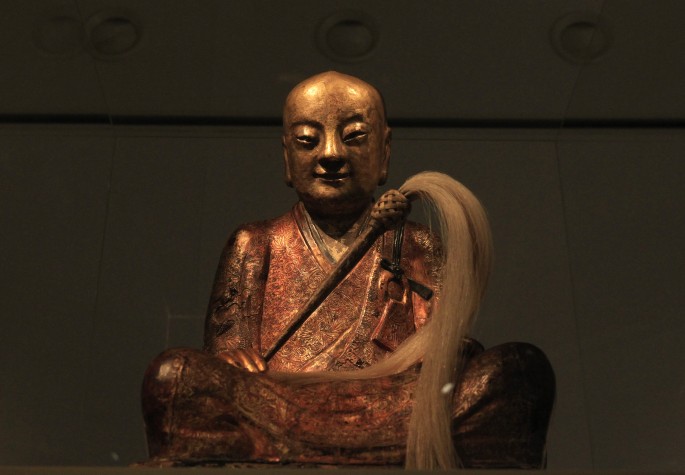The owner of a Buddha statue from China that conceals the remains of a monk believed to have been mummified about 1,000 years ago says he is willing to return the statue if it can be proven that it was indeed stolen.
According to reports, the Dutch private collector, who has chosen to remain anonymous, says he will only return the Buddha statue if it can be proven that it belonged to a Chinese village or a "Buddhist community that still exists."
The Dutchman, who bought the 1,000-year-old Buddha statue, was reportedly unaware of what was concealed inside it. The secret of the golden four-foot-tall (1.2-m) statue was revealed gradually, beginning in 1997, after the owner suspected that there might be something inside it.
Reports indicate that the owner, who works as an architect in Amsterdam, took the statue to Utrecth University to have it checked and carbon-dated.
After conducting several tests on the Buddha statue, samples revealed that the body of the mummy inside it is from the 11th century and the pillow it is sitting on was dated to 300 years later.
In 2013 and 2014, CAT scans were conducted on the statue at the Meander Medical Center in Amsterdam. The scans revealed that there were paper scraps printed with ancient Chinese characters in the abdominal cavity of the monk-mummy.
Researchers have not yet been able to reveal what the characters mean.
The news of the Buddha statue has since gone viral, following its exhibition last year from January to August in the Drents Museum, Holland. It was also exhibited at the Hungarian Natural History Museum in Budapest.
Reports indicate that villagers in Yangchun, Fujian Province, who saw news reports about the exhibition on Chinese TV, are convinced that the statue is theirs. They say it was stolen from a temple in their village in 1995.
According to the Global Times, an official with China's State Administration of Cultural Heritage (SACH) says that the theft has been confirmed.
However, the Dutch owner says although there are a few pictures of statues on Chinese media that looks very much like his, there are also aspects that do not match.
"It is said the statue was stolen in 1995, but it was already in the Netherlands at that time. There are pictures as proof. Also recent research shows that the mummy belongs to a temple much bigger and more important than the local temple in Yangchun," the collector said.



























